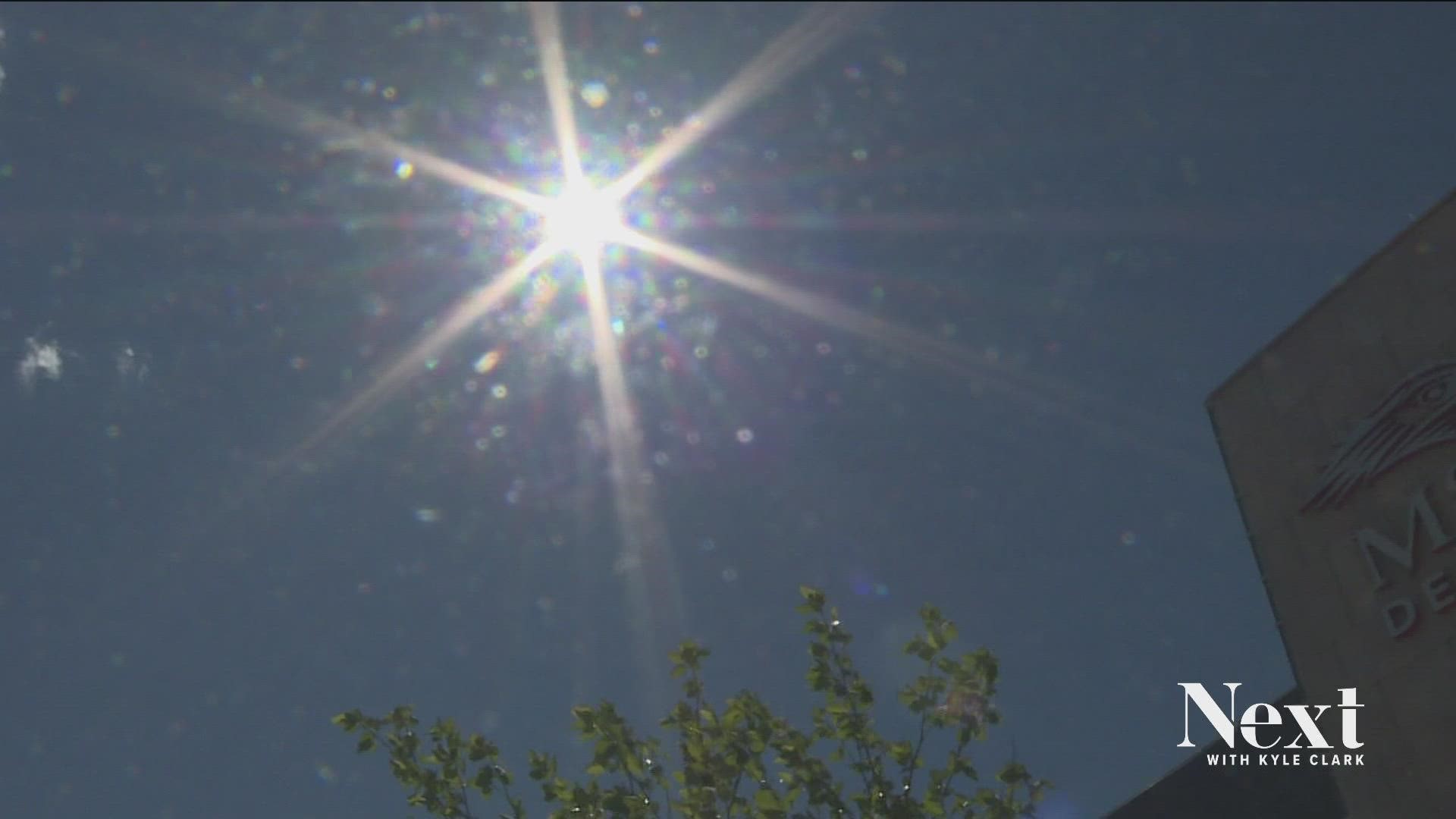DENVER — The impacts of adapting to and mitigating climate change can take decades to realize. That can make it difficult for people to picture success now.
So, we took a look at what a climate-hopeful Colorado looks like and whether it's within reach.
What would a climate-hopeful Colorado look like?
Lauren Gifford, an affiliate professor with Metropolitan State University of Denver and a climate expert, described what Colorado could look like with climate adaptation and mitigation in full swing.
"We'd be driving electric cars and hopefully [the Regional Transportation District] expands," she said.
It would also mean a Colorado with yards growing more native plants that are drought resistant, and property owners xeriscaping with rocks. That's appropriate for the Front Range and a future with less access to water, said Gifford.
"And makes the bees happy, too!" she said.
Gifford also believes it would be critical for the state to rely mostly on renewable energy, like wind and solar power.
Her vision of a climate-hopeful Colorado is similar to that of other experts we chatted with, including Grace Rink with the city of Denver, who said overall success depends on other cities and changes from the federal government.
"Emissions from vehicles is really controlled by the federal government," said Rink.
If mitigation and adaption measures work, Rink said, "We will see improvements in our air quality, fewer days of extreme heat. I can't say we would necessarily see less than we are having now."
Can these changes become a reality?
Rink and several other experts said the focus is to stop the impacts of climate change from getting worse.
While there is a long to-do list, the experts are still hopeful.
"We are relentlessly optimistic," said Rink.
"Yes, that is in our grasp," said climate scientist and Colorado State University professor Scott Denning.
He is optimistic these changes will happen because of what is at stake.
"Climate change happens progressively," he said.
"There's no bright line like we live in the Shire and cross over a line, and we are in Mordor," Denning said (shoutout to all "Lord of the Rings" fans who understood this). "This gets worse and worse and worse gradually, and there's no end to how much worse it can get."
But the experts take comfort in the changes and work happening now.
"In Colorado, solar and wind power are cheaper," said Denning. "Not a little bit cheaper, by half."
Denver also now requires buildings more than 25,000-square-feet to have nearly net-zero emissions by 2040. Fort Collins is working toward relying on renewable electricity by 2030.
We also spoke to Professor Lisa Denning at the University of Colorado Boulder, who said she's encouraged by all the new announcements about electric vehicles and charging stations, and encouragement for using public transportation.
But while individual actions do matter, so does the bigger picture.
"The pressure on the individual is not helpful," said Rink. "An individual can only work within the system we provide them. I don't want people to feel guilty for driving to the grocery store if there isn't another viable way for them to do that."
What infrastructure needs to change?
The experts call it an energy transition. Gifford said that means supporting communities that rely on fossil fuels. These kinds of changes can impact their budget for schools, roads, ambulances and tax dollars. It would require having support in place for these communities.
A lot of this comes down to money.
"How about we spend the money we have differently?" suggested Rink. "That is something we are hoping for. There are lots of calculations, we need billions upon billions here in Denver and globally to do all the work to fix climate change. First, let's look at how we are building buildings now to make them more climate safe for the future."
According to the U.S. Energy Information Administration, just over a third of electricity in Colorado is from renewable sources, which tripled in a decade.
Most of it comes from wind and some solar.
The experts said that would need to be significantly scaled up and that people are working on how to manage the fact that it isn't windy and sunny 24/7.
Infrastructure would also have to be developed to transfer energy from one part of the state to another. The future could entail deals with neighboring regions and states to buy and sell energy when one area has a surplus over another.
SUGGESTED VIDEOS: Full Episodes of Next with Kyle Clark

